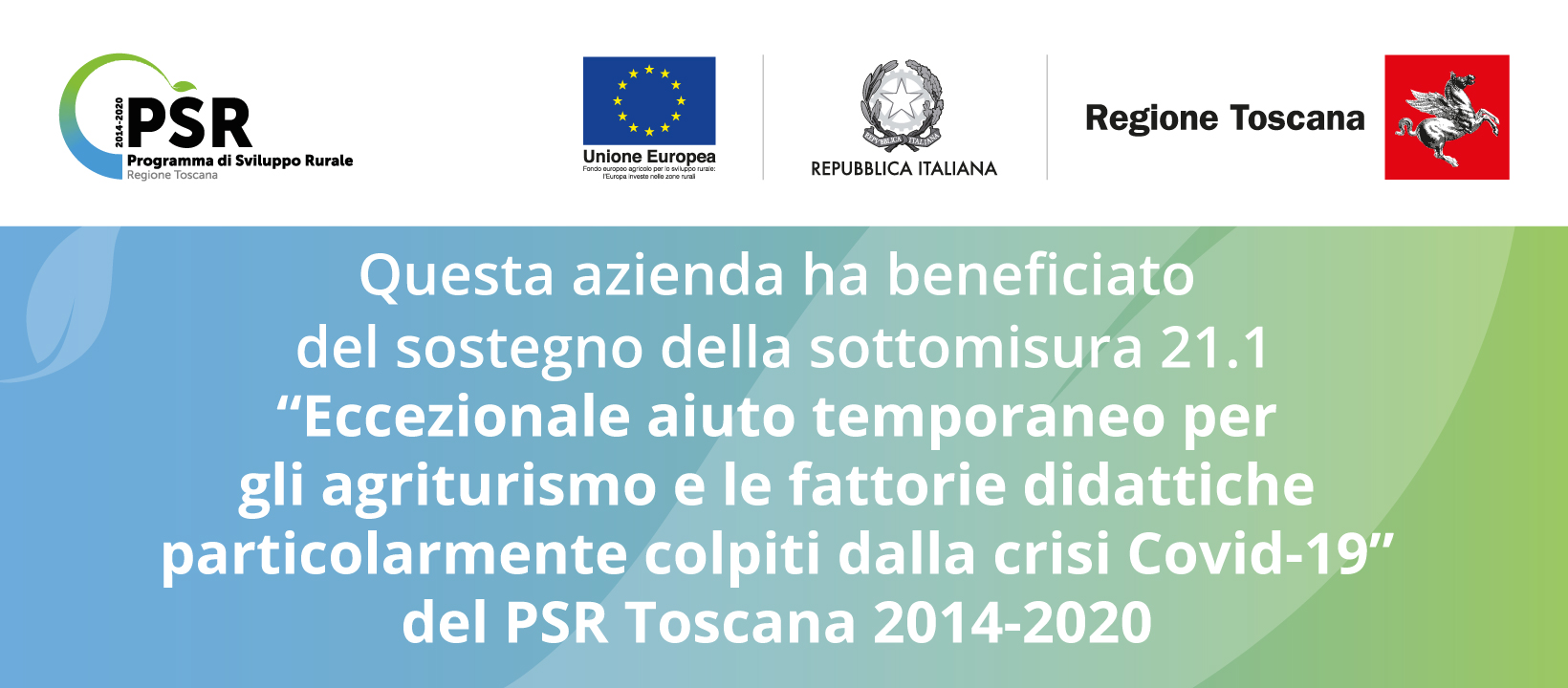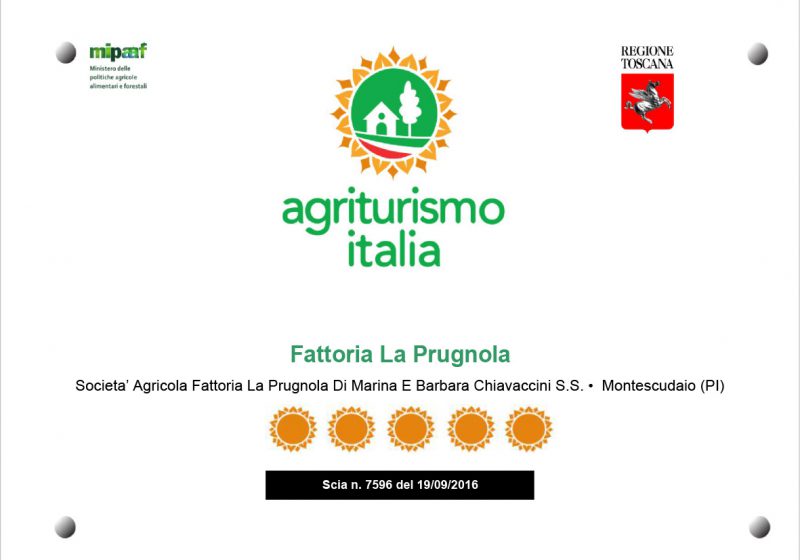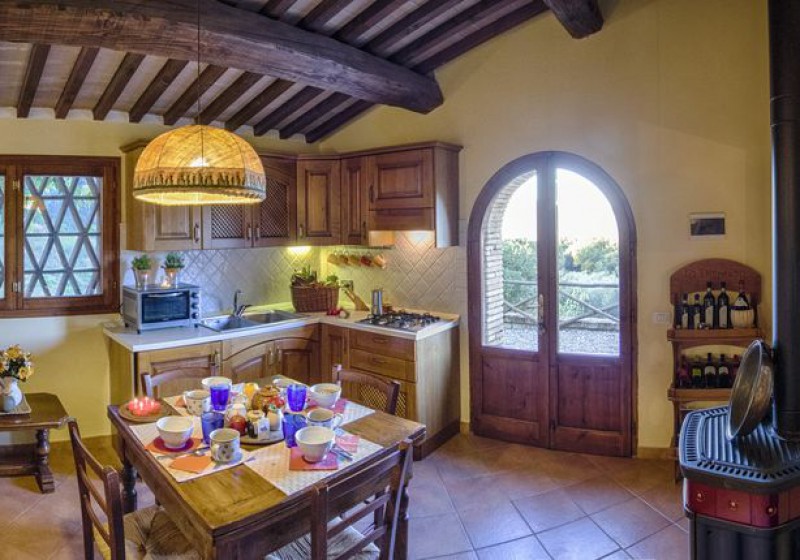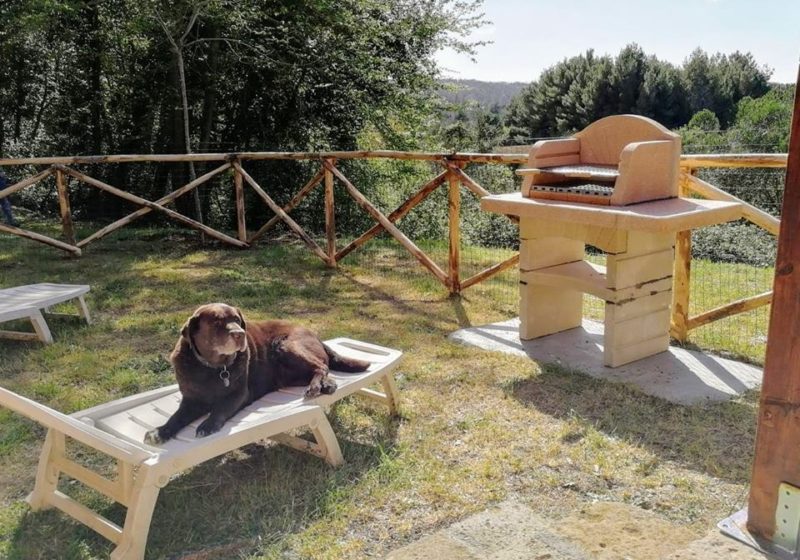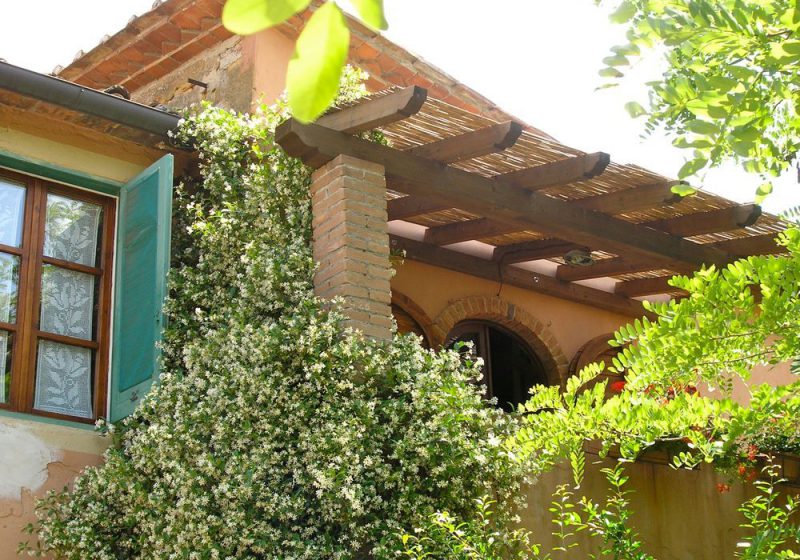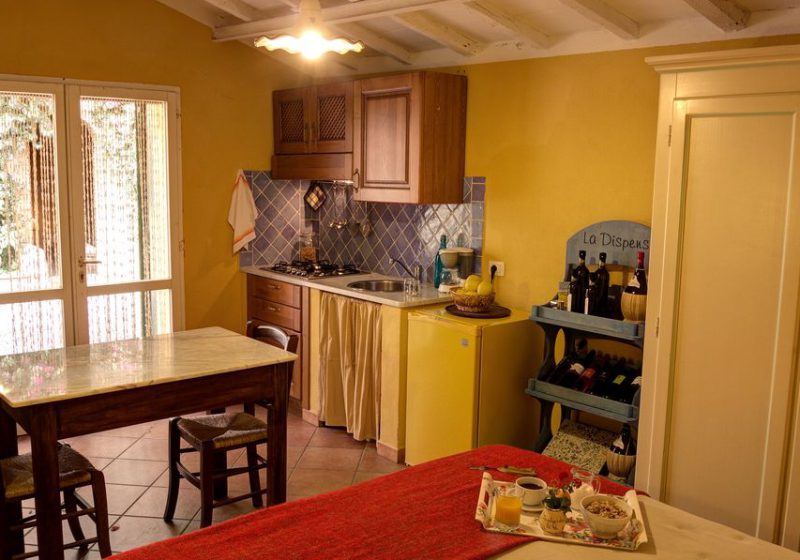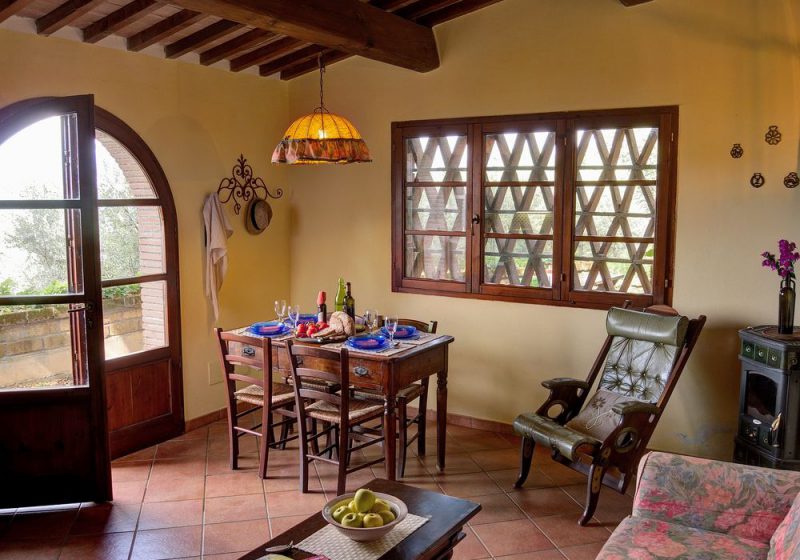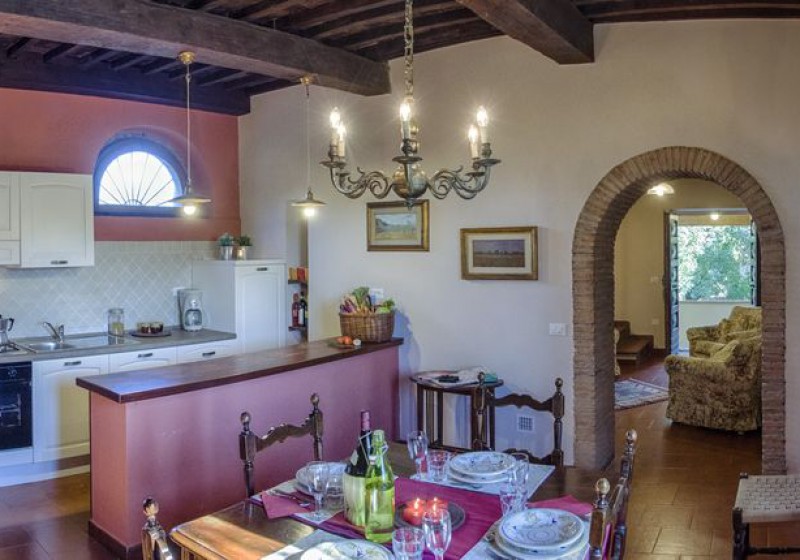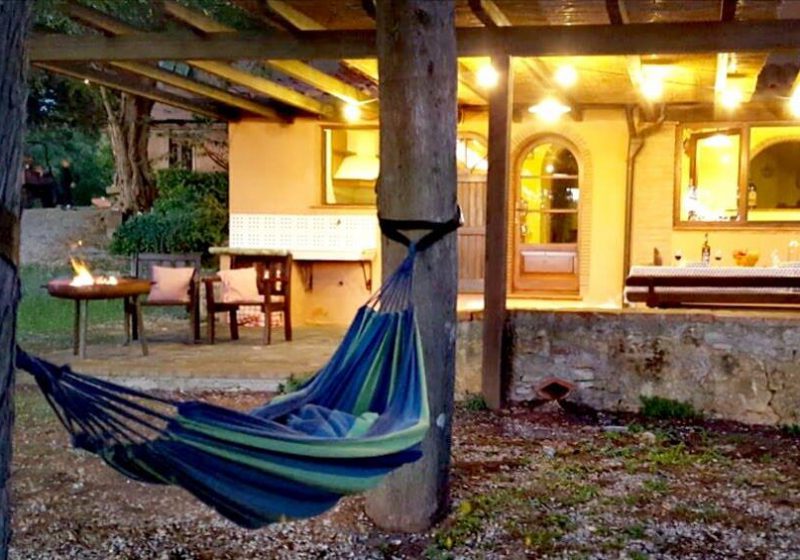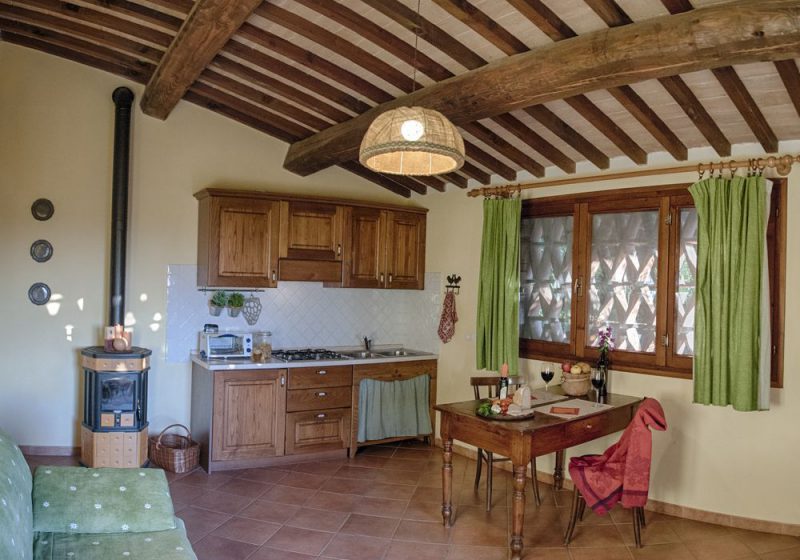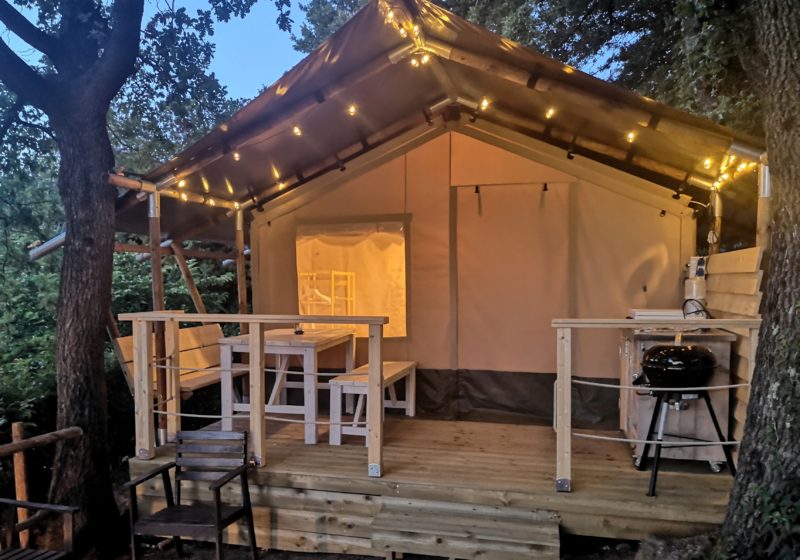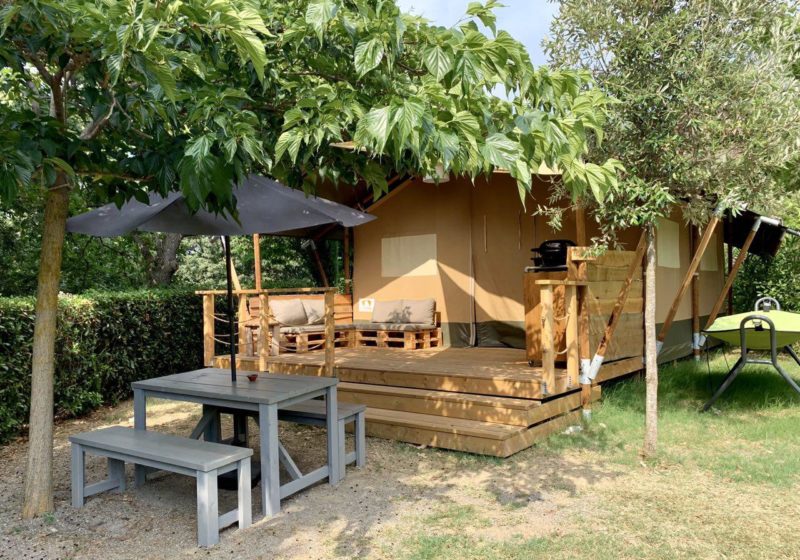Classificazione
 The Regional Classification, which in Tuscany was represented by the 3 levels of the Spikes, has been replaced by the National Classification of the “Agriturismo Italia” brand, which uses the Sunflowers.
The Regional Classification, which in Tuscany was represented by the 3 levels of the Spikes, has been replaced by the National Classification of the “Agriturismo Italia” brand, which uses the Sunflowers.
The classification is divided into 5 levels and is highlighted by the exposure to the public of as many symbols, from 1 to 5 Sunflowers.
The “one” classification level is attributed to all those who can legally exercise the agritourism activity.
The classification levels from “two” to “five” are attributed through self-certification for the structures offering overnight service (with or without other added services) on the basis of the conformity of the farms to different requirements, each of which is assigned specific score.
The first level: 1 Girasole is attributed to all companies automatically as it meets the legal requirements ie companies that offer only the minimum equipment and services required by law in conditions of necessary hygiene and functionality.
The second level: 2 Sunflowers go to the company that offers, in simple form, equipment and services beyond the minimum required by law in an organizational and landscape-environment context that presents sporadic emergencies from normality.
The third level: 3 Sunflowers go to the “average” company that offers, with some organizational finishes or structural qualities, equipment and services that also highlight the agricultural and naturalistic characterization of hospitality, in a landscape-environment of good quality.
The fourth level: 4 Girasoli can be attributed to the company that harmoniously manages the comfort and the agricultural and naturalistic characterization of the reception, making available to the guest a complex of equipment and services of high level in an excellent landscape-environmental context.
The maximum, ie the fifth level, 5 Girasoli can be attributed to the company that, in addition to the requirements of level 4, has particular excellence in the provision of services, in the peculiarities of the landscape-environmental context and in evidence of the agricultural and naturalistic characterization of the ‘hospitality.
